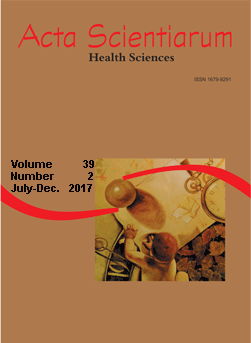<b>Electromyographic evaluation of the lower limbs of patients with Down syndrome in hippotherapy
Abstract
Hippotherapy is a therapeutic method that uses the horse’s movement to achieve functional results in practitioners with Down syndrome (DS), who present motor and neurophysiological changes that affect the musculoskeletal system. Evaluating the motor behavior related to the control and the improvement of muscle activation in practitioners with Down syndrome subjected to hippotherapy. 10 practitioners were divided into two groups: Down Group (DG) – practitioners with DS, and Healthy Group (HG) – practitioners with no physical impairment. The muscles gluteus medius, tensor fasciae latae, rectus femoris, vastus medialis, vastus lateralis, biceps femoris, tibialis anterior and gastrocnemius were evaluated by electromyography using gross RMS values, which correspond to muscle activation; the evaluations were performed on the 1st and 10th hippotherapy sessions (frequency: once a week), and after 2 months interval without treatment, they were performed on the 1st and 10th hippotherapy sessions (frequency: twice a week). It was noted that activation of the studied muscles increased with the passing of sessions, regardless the weekly frequency of attendance; however, the period without treatment resulted in reduction of this effect. Practitioners with DS presented satisfactory changes in muscle activation pattern, in learning and in motor behavior during hippotherapy sessions.
Downloads
DECLARATION OF ORIGINALITY AND COPYRIGHTS
I Declare that current article is original and has not been submitted for publication, in part or in whole, to any other national or international journal.
The copyrights belong exclusively to the authors. Published content is licensed under Creative Commons Attribution 4.0 (CC BY 4.0) guidelines, which allows sharing (copy and distribution of the material in any medium or format) and adaptation (remix, transform, and build upon the material) for any purpose, even commercially, under the terms of attribution.
Read this link for further information on how to use CC BY 4.0 properly.























5.png)







